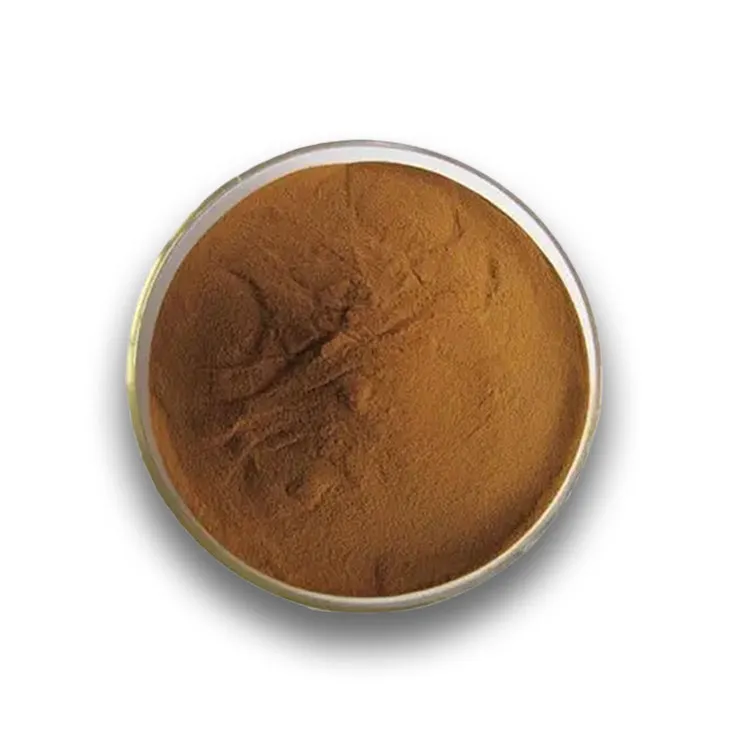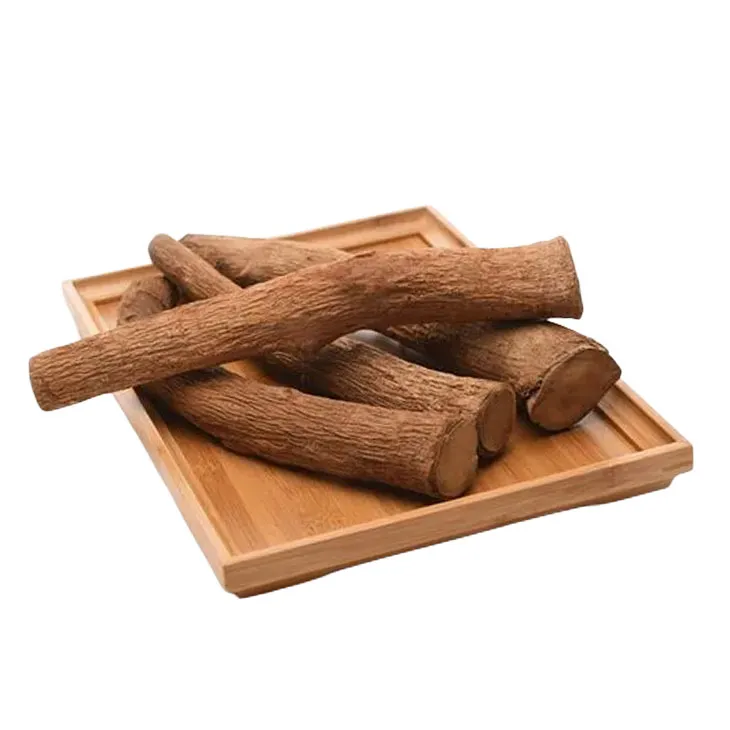- 0086-571-85302990
- sales@greenskybio.com
The process of extracting Tongkat Ali polysaccharides from Tongkat Ali extract.
2024-11-28

1. Introduction to Eurycoma longifolia
Eurycoma longifolia, commonly known as Tongkat Ali, is a remarkable plant native to Southeast Asia. It has been a subject of extensive research due to its numerous bioactive components. Polysaccharides, in particular, are among the key constituents that have attracted significant attention. These polysaccharides are believed to possess various beneficial properties, which make the extraction process from Eurycoma longifolia extracts a crucial area of study.

2. Obtaining Raw Eurycoma longifolia Extracts
2.1 Solvent Extraction
One of the primary methods for obtaining raw Eurycoma longifolia extracts is through solvent extraction. This process involves the use of solvents to dissolve the bioactive compounds present in the plant material. Commonly used solvents include ethanol, methanol, and water. The choice of solvent depends on several factors such as the solubility of the desired compounds and the selectivity towards different components.
- The plant material, which could be the roots, stems, or leaves of Eurycoma longifolia, is first dried and ground into a fine powder. This increases the surface area available for extraction.
- The powdered plant material is then soaked in the selected solvent for a specific period. This soaking time can range from a few hours to several days, depending on the nature of the plant material and the extraction conditions.
- After soaking, the mixture is usually subjected to agitation, either by shaking or stirring. This helps in enhancing the mass transfer between the solvent and the plant material, facilitating the extraction of the bioactive compounds.
- Finally, the solvent containing the dissolved compounds is separated from the solid plant residue through filtration or centrifugation. The resulting liquid is the raw Eurycoma longifolia extract, which contains a complex mixture of various bioactive components, including polysaccharides.
2.2 Other Extraction Methods
In addition to solvent extraction, there are other methods that can be used to obtain Eurycoma longifolia extracts. For example, supercritical fluid extraction has been explored. Supercritical fluids, such as carbon dioxide in its supercritical state, offer unique properties that can be advantageous for extraction. They have high diffusivity and low viscosity, which can result in more efficient extraction. However, this method requires specialized equipment and more complex operating conditions compared to solvent extraction.
Another method is microwave - assisted extraction. This technique utilizes microwave energy to heat the plant material and solvent mixture. The microwaves cause rapid heating, which can accelerate the extraction process. It can also potentially improve the selectivity of extraction towards certain components. Nevertheless, careful control of microwave power and exposure time is necessary to avoid degradation of the bioactive compounds.

3. Purification of Eurycoma longifolia Polysaccharides from the Extracts
3.1 Chromatography
Chromatography is a powerful technique for purifying Eurycoma longifolia polysaccharides from the raw extracts. It is based on the principle of differential migration of components in a mobile phase through a stationary phase. There are different types of chromatography that can be applied in this context.
- Column chromatography is commonly used. In this method, a column is packed with a stationary phase material, such as silica gel or a resin. The raw extract is loaded onto the top of the column, and a solvent (mobile phase) is passed through the column. Different components in the extract will interact differently with the stationary phase and mobile phase, causing them to elute at different times. Polysaccharides can be separated from other substances based on their unique chemical properties, such as molecular size, charge, and polarity.
- Gel filtration chromatography is another type that is particularly useful for separating polysaccharides based on their molecular size. A gel matrix with pores of a specific size range is used as the stationary phase. Smaller molecules can enter the pores more easily and are thus retained longer in the column, while larger molecules, like polysaccharides, are eluted more quickly. This allows for the isolation of polysaccharides from smaller molecules in the extract.
- Ion - exchange chromatography can also be employed. If the polysaccharides have a charge, they can interact with an ion - exchange resin in the column. By adjusting the pH and ionic strength of the mobile phase, the polysaccharides can be selectively bound and then eluted from the column, separating them from uncharged or differently charged substances in the extract.
3.2 Precipitation
Another purification method is precipitation. This involves adding a precipitating agent to the extract to cause the polysaccharides to precipitate out of solution. For example, ethanol can be added to the extract in increasing concentrations. As the ethanol concentration rises, polysaccharides, which are less soluble in ethanol - water mixtures, will start to form a precipitate. The precipitate can then be separated from the supernatant by centrifugation or filtration. However, this method may not be as selective as chromatography and may also result in the co - precipitation of other substances along with the polysaccharides.
3.3 Ultrafiltration
Ultrafiltration is a membrane - based separation technique that can be used to purify polysaccharides. Ultrafiltration membranes have pores of a specific size range. When the extract is passed through the ultrafiltration membrane, molecules larger than the pore size, such as polysaccharides, are retained on one side of the membrane, while smaller molecules pass through. This can effectively separate polysaccharides from smaller impurities in the extract. However, membrane fouling can be a problem during ultrafiltration, which may reduce the efficiency of the process over time.

4. Characterization of Extracted Eurycoma longifolia Polysaccharides
After the purification of Eurycoma longifolia polysaccharides, it is important to characterize them to understand their properties better. This includes determining their chemical structure, molecular weight, and monosaccharide composition.
- Chemical structure analysis can be carried out using spectroscopic techniques such as infrared spectroscopy (IR) and nuclear magnetic resonance spectroscopy (NMR). IR can provide information about the functional groups present in the polysaccharides, while NMR can give more detailed information about the chemical bonds and the arrangement of atoms in the polysaccharide molecules.
- Molecular weight determination can be done using methods like gel permeation chromatography (GPC) or light scattering techniques. GPC measures the elution time of the polysaccharides through a column filled with a gel matrix, and based on calibration with known molecular weight standards, the molecular weight of the polysaccharides can be estimated. Light scattering techniques, on the other hand, directly measure the scattering of light by the polysaccharide molecules in solution to determine their molecular weight.
- Monosaccharide composition analysis involves hydrolyzing the polysaccharides into their constituent monosaccharides and then analyzing the resulting mixture. This can be done using techniques such as high - performance liquid chromatography (HPLC) or gas chromatography (GC). By comparing the retention times or peaks of the monosaccharides in the chromatogram with those of known standards, the types and relative amounts of monosaccharides in the polysaccharides can be determined.
5. Applications of Eurycoma longifolia Polysaccharides
5.1 In Medicine
Eurycoma longifolia polysaccharides have shown potential in various medical applications. For example, they may have immunomodulatory effects. They can stimulate the immune system by enhancing the activity of immune cells such as macrophages and lymphocytes. This could potentially be useful in the treatment of immune - related disorders or in boosting the immune response during infections.
There is also evidence suggesting that these polysaccharides may have anti - inflammatory properties. They can reduce the production of inflammatory mediators such as cytokines, which are involved in various inflammatory diseases. By modulating the inflammatory response, Eurycoma longifolia polysaccharides may contribute to the treatment of conditions like arthritis or inflammatory bowel diseases.
5.2 In Health - care Products
In the field of health - care products, Eurycoma longifolia polysaccharides are being explored for their potential as dietary supplements. They may offer various health benefits, such as improving energy levels and enhancing overall well - being. Due to their potential bioactive properties, they can be incorporated into products such as energy drinks, nutritional capsules, or functional foods.
6. Conclusion
The process of extracting Eurycoma longifolia polysaccharides from Eurycoma longifolia extracts is a multi - step and complex procedure. It involves obtaining raw extracts through methods like solvent extraction and then purifying the polysaccharides using techniques such as chromatography, precipitation, or ultrafiltration. Characterization of the extracted polysaccharides is essential for understanding their properties, which in turn can lead to the exploration of their potential applications in medicine and health - care products. As research in this area continues to progress, it is expected that more efficient extraction and purification methods will be developed, and the full potential of Eurycoma longifolia polysaccharides will be further uncovered.
FAQ:
What are the main methods for obtaining the raw Eurycoma longifolia extracts?
One of the main methods for obtaining the raw Eurycoma longifolia extracts is solvent extraction. Different solvents can be used depending on the target components and their solubility properties. For example, ethanol or water - based solvents might be employed to extract the bioactive substances from the plant material.
Why is chromatography used in the purification of Eurycoma longifolia polysaccharides?
Chromatography is used in the purification of Eurycoma longifolia polysaccharides because it can effectively separate components based on their different chemical properties. Since the extract contains multiple substances, chromatography helps to isolate the polysaccharides from other substances such as proteins, lipids, and other small - molecule compounds.
What are the potential medical applications of Eurycoma longifolia polysaccharides?
The potential medical applications of Eurycoma longifolia polysaccharides are diverse. They may have immunomodulatory effects, which could be beneficial in enhancing the body's immune response. Additionally, they might have antioxidant properties that can help protect cells from oxidative damage. There is also potential for anti - inflammatory effects, which could be useful in treating various inflammatory diseases.
How can the quality of the extracted Eurycoma longifolia polysaccharides be ensured?
To ensure the quality of the extracted Eurycoma longifolia polysaccharides, several factors need to be considered. Firstly, the quality of the raw material, Eurycoma longifolia, should be carefully controlled, ensuring it is sourced from reliable places and is of high purity. During the extraction process, strict control of parameters such as temperature, time, and solvent concentration is necessary. After extraction, comprehensive analysis using techniques like spectroscopy and chromatography can be carried out to verify the purity and composition of the polysaccharides.
Are there any challenges in the extraction process of Eurycoma longifolia polysaccharides?
Yes, there are several challenges in the extraction process of Eurycoma longifolia polysaccharides. One challenge is the complexity of the plant matrix, which contains a variety of substances that need to be separated from the polysaccharides. Another challenge is the potential degradation of polysaccharides during the extraction process due to factors such as high temperature or inappropriate solvents. Moreover, the cost - effectiveness of the extraction process also needs to be considered to make it viable for large - scale production.
Related literature
- Extraction and Characterization of Bioactive Compounds from Eurycoma longifolia"
- "Polysaccharides from Eurycoma longifolia: Potential Health Benefits and Extraction Strategies"
- "The Role of Eurycoma longifolia Polysaccharides in Immunomodulation: A Review"
- ▶ Hesperidin
- ▶ Citrus Bioflavonoids
- ▶ Plant Extract
- ▶ lycopene
- ▶ Diosmin
- ▶ Grape seed extract
- ▶ Sea buckthorn Juice Powder
- ▶ Fruit Juice Powder
- ▶ Hops Extract
- ▶ Artichoke Extract
- ▶ Mushroom extract
- ▶ Astaxanthin
- ▶ Green Tea Extract
- ▶ Curcumin
- ▶ Horse Chestnut Extract
- ▶ Other Product
- ▶ Boswellia Serrata Extract
- ▶ Resveratrol
- ▶ Marigold Extract
- ▶ Grape Leaf Extract
- ▶ New Product
- ▶ Aminolevulinic acid
- ▶ Cranberry Extract
- ▶ Red Yeast Rice
- ▶ Red Wine Extract
-
Maitake Mushroom Extract
2024-11-28
-
Rose Hip Extract
2024-11-28
-
Saffron Extract Powder
2024-11-28
-
Clove Powder
2024-11-28
-
Dan Shen Root Extract/Salvia Root Extract
2024-11-28
-
Astaxanthin
2024-11-28
-
Kidney Bean Extract
2024-11-28
-
Hawthorn powder
2024-11-28
-
Lily extract
2024-11-28
-
Soy Extract
2024-11-28





















